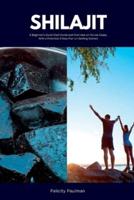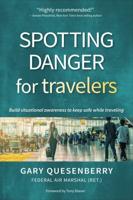Publisher's Synopsis
Ideas and Skills for dealing with the cold and the out of doors. This is a great book for anyone who wants to learn how to get along in the out of doors. It is principle based, meaning it helps you relate to this skills as a master would. Many times people are taught the technique only, and that is simple and providing everything stays the same it will work. Here's a technique for building a fire. A can of gas, and a match... what if you don't have a gasoline, or any other kindling or fuel? Well that happened to us. I was hunting with an Uncle who had put on several extra pair of socks because it was colllld. Pretty soon his feet got cold, but he didn't complain. Well, during a rest stop I noticed he was doing something off to the side. He had taken paper from his pockets and pushed in under some branches and lit it. Well, it started to going and he was warming his boots, but it started to die down, so he quickly looked for more wood, but was not able to keep it going. Again he did not complain, but a short time later he told me his feet were really really cold, and we needed to do something. Well, we pulled his boots off and put them on my stomach, and that helped some, but he was cold, we needed a fire. Only problem was we had no kindling. He had used what paper, and TP he had, I did not have any but we needed to start a fire? We put our heads together and this is what we figured out. We put the bullet of a cartridge in the end of the barrel and levered it back and forth to remove the bullet then we poured it on top of flat rock. We figured if we used several cartridges, or more, we would have a pretty good pile of rifle powder (rifle powder burn much slower than black powder, which would be tooo fast!) so we gathered branches and small limbs and piled them over the pile of powder. Then we made sure we had plenty of extra wood to add to it, once it started. Then we lit the powder. Sure enough it started the branches, and bigger stuff, and we had a good fire. Once he was good and warm we put one pair of socks on his feet and then his boots. The extra socks were too many, they squished the veins and prevented the blood from his warm torso, from going down to his feet. With one pair of thick socks he did much better than the three pair. There's lots to keeping warm... here's some other thoughts. Important skills that are "not" common knowledge. Coats do not warm us up, they prevent heat loss. If your feet are cold put on a scarf and a hat.... The head and neck are responsible for 50% to 75% of the body's heat loss; also they are most important if the body does not have heat to protect the brain, heart, lungs, etc., it surely won't send it down to your feet. Feet can drop to temperatures below 50° F. If the heart temperature drops to even 70° F chances are you have died. I mention many "principles" associated with cold conditions. Principles are the key to building predictable outcomes or results. Techniques change. For example: Transporting heat to your toes requires warm blood pumping through your arteries and veins. If you put on three pair of wool socks, on a cold day to keep your feet warm, but you use your everyday shoes, you will likely squeeze your feet so tight that blood will have a hard time keeping them warm. Thanks for your interest and purchasing my books.








